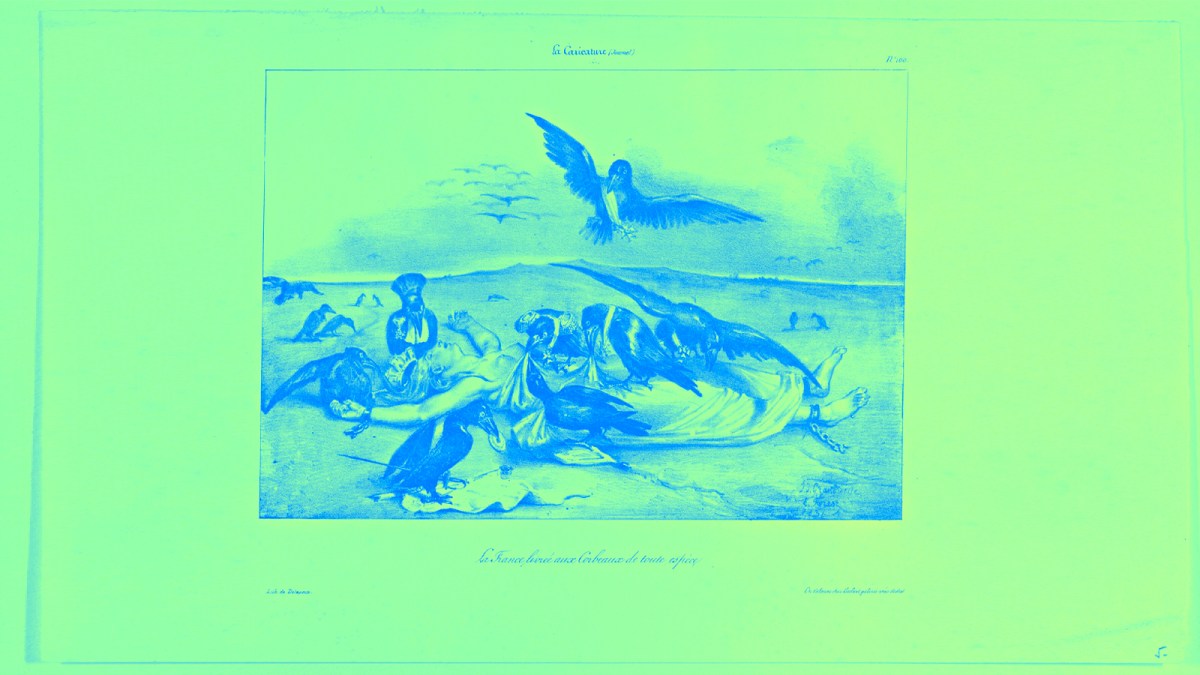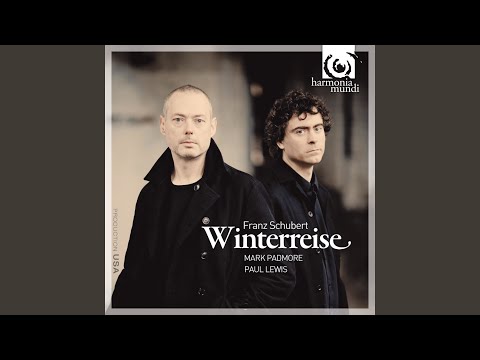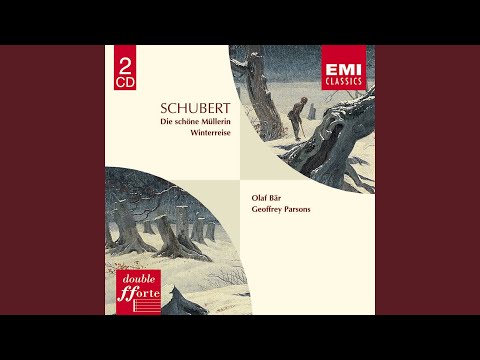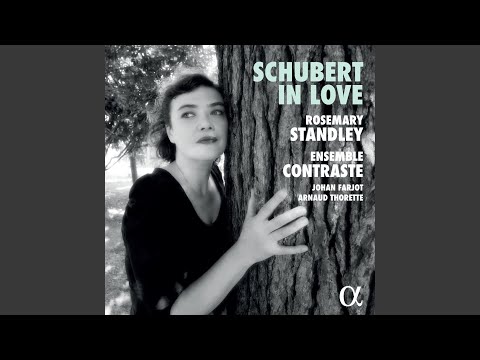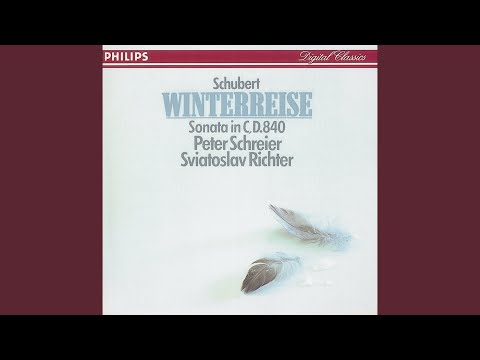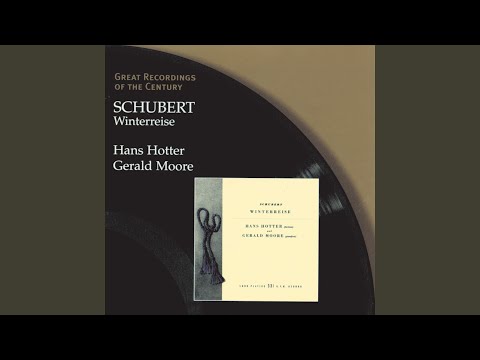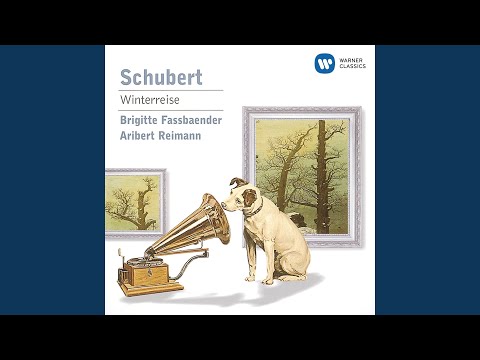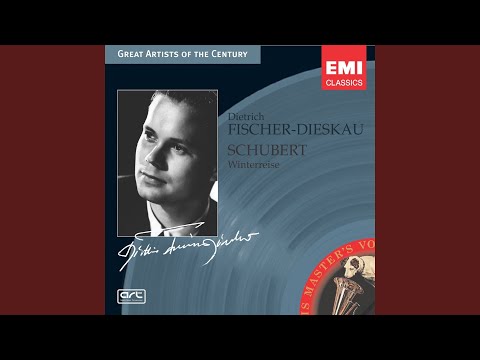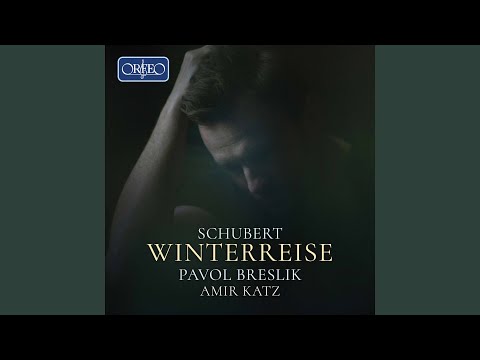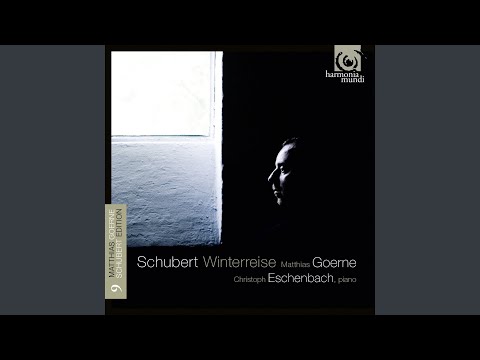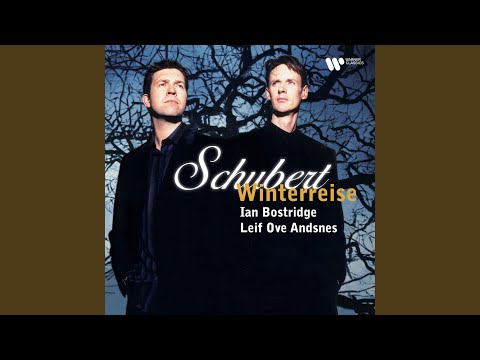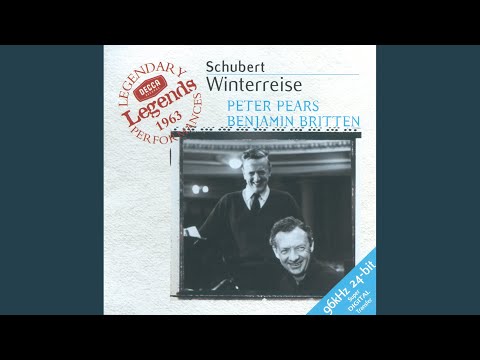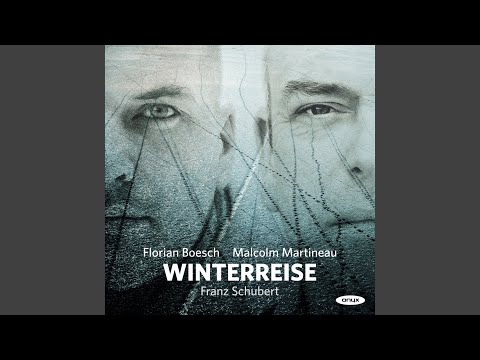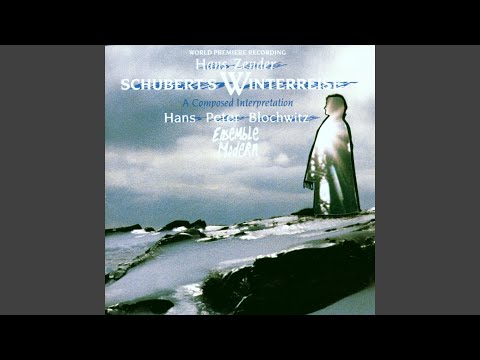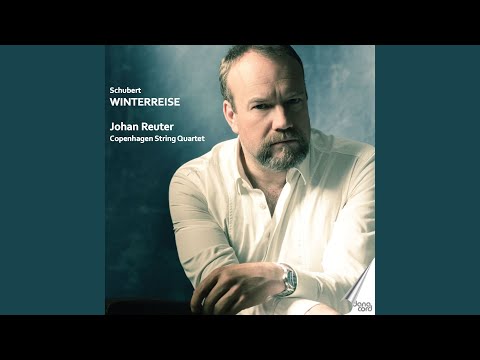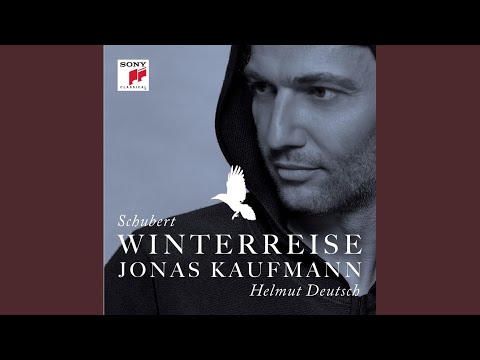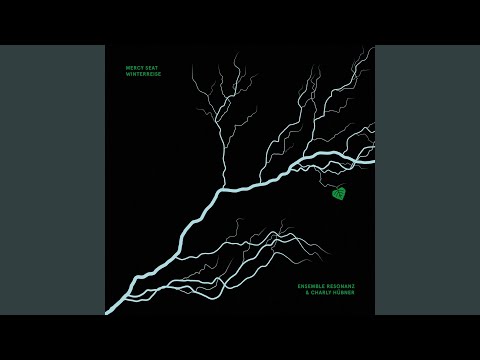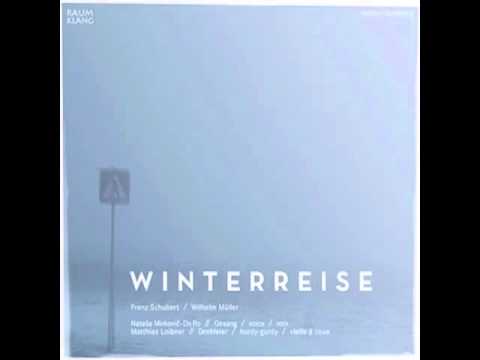I came here as a stranger. Actually, no: I was very familiar with “Winterreise” before this latest exploration. But, after listening to 75 recordings of the work in quick succession, I’m beginning to question whether I really knew “Winterreise” before now.
While the winter solstice is behind us and days are now officially getting longer, we still have, y’know, all of winter to get through. As a means to that end, I’ve taken on the seemingly quixotic task of putting together an “ultimate” playlist, following the throughline of Schubert’s song cycle but picking a different standout recording of each of the 24 songs. Some of you might argue that the whole point of “Winterreise” is to follow one singer’s emotional arc from “Gute Nacht” to “Der Leiermann,” to which I say… Well, yes, I see your point now. But in assembling this playlist, I’ve found that the juxtaposition of interpretations has also illuminated new aspects of Schubert’s music and poet Wilhelm Müller’s texts.
Either way, for now, I think it’s time to be a stranger again to “Winterreise.” At least until the next solstice.
Mark Padmore, Paul Lewis: “Gute Nacht” (2009)
The opening of this “Gute Nacht” is so hushed it seems as if Paul Lewis was testing out the keys before moving into the steady pace of the wanderer’s walk. Tenor Mark Padmore mirrors this with a delivery full of quiet introspection and honeyed rue. It’s the sound of a man making a quick and unnoticed escape in the middle of the night. Padmore indulges in one outburst—when he blames God for love’s own propensity to wander—before hushing himself again. This isn’t the time to air grievances; there’s a long night ahead.
Roman Trekel, Oliver Pohl: “Die Wetterfahne” (2008)
Trekel sounds like he’s ready to scale the house, rip the weathervane from the roof, and leave it in his beloved’s bed, Jack Woltz-style.
Benjamin Appl, James Baillieu: “Gefrorne Tränen” (2022)
Maybe it was pandemic-induced isolation, but the last few years have given us several seasons’ worth of new “Winterreise” recordings. Among the standouts is German-British baritone Benjamin Appl’s reading of the work for Alpha with pianist James Baillieu, which came out earlier this year. His “Gefrorene Tränen” adds a hothouse humidity to the description of scalding tears that freeze on the unnamed narrator’s cheeks; a reflection of the clammy intimacy he was once embroiled in. It gets so claustrophobically close that Appl whisper-growls the line “meine Tränen.”
Olaf Bär, Geoffrey Parsons: “Erstarrung” (1988)
Bär’s more stoic approach to even the most fervent passages of Schubert’s cycle serves “Numbness” well. Bär’s narrator is already mired in the cold of the landscape and beginning to sink. Contrasting this is Geoffrey Parsons’s urgent piano accompaniment.
And yet, Bär has not lost all feeling. His final stanza of this text becomes more biting, thanks in no small part to the hard-consonant–laden text, which lends itself to pointedly rigid reads of words like “erstorben” (“died”).
Alice Coote, Julius Drake: “Der Lindenbaum” (2013)
Languid and luscious, Alice Coote’s live recording from Wigmore Hall is easily one of the sexiest reads the work has ever had. (If you had “Sapphic subtext” on your “Winterreise” Bingo Card, now’s your time to cash in.) Her ode to the linden tree that serves as a living monument to her now-lost love luxuriates in earthy nostalgia and D.H. Lawrence-esque summer landscapes. When she snaps back to the present moment—all cold wind and dead leaves—her voice steels itself so abruptly it feels like a slap.
Rosemary Standley, Ensemble Contraste: “Wasserflut” (2020)
French singer Rosemary Standley’s shambling “Wasserflut” lends Schubert an anodyne melancholia that calls to mind Aimee Mann and Karen Carpenter, albeit a few registers higher. The lightness of Standley’s voice is balanced out by the faint echoes of thunder in an otherwise folkish, vagabondish arrangement.
Philippe Sly, Chimera Project: “Auf dem Flusse” (2019)
Similar to Standley’s, Philippe Sly’s “Winterreise” takes the Reise element to heart with a chamber ensemble that brings out the Jewish-Klezmer influences in Schubert’s music—among so many other folk impulses that it sounds like a Gogol Bordello concert at times.
This arrangement is particularly effective in “Auf dem Flusse,” in which the narrator carves a tribute to his love in the ice as the stream’s water gushes underneath. Sly tiptoes across the frozen surface, walking tentatively but with determination. The Chimera Project ensemble reminds us of the constant flow underneath the frozen layer, and the ever-present threat of a crack forming in the ice.
The latest from VAN, delivered straight to your inbox
Peter Schreier, Sviatoslav Richter: “Rückblick” (1985)
Recorded live in Dresden, Schreier’s 1985 “Winterreise” is punctuated by audience coughs and shuffles between songs (another ever-present threat). But it’s also a textbook interpretation from start to finish. The acerbic notes running throughout Schreier’s performance are heightened in “Rückblick,” as though the ice in “Auf dem Fluss” has finally given in and we’re now flooded with pure, unmitigated rage and gall.
Hans Hotter, Gerald Moore: “Irrlicht” (1954)
“I am used to straying; every path leads to one goal,” sings the narrator in “Irrlicht,” adding later that “every river will reach the sea; every sorrow, too, will reach its grave.” Hans Hotter takes this one step further, singing like he’s already in the grave.
Brigitte Fassbender, Aribert Reimann: “Rast” (1988)
The brilliance of Schubert and Müller’s pacing of texts is that we hear the narrator reference the grave as the inevitable conclusion for every journey in “Irrlicht,” and then—in the next song—only realize how tired they are as they lie down to sleep in a charcoal-burner’s cottage. Mezzo-soprano Brigitte Fassbender doesn’t shy away from letting her voice go threadbare, even raspy at times. The twin tolls of travel and isolation are palpable.
Lotte Lehmann, Paul Ulanowsky: “Frühlingstraum” (1941)
The first woman to record “Winterreise,” soprano Lotte Lehmann initially split the project between RCA and Columbia in 1940 and 1941, just a few years after she relocated to the United States in response to Hitler’s annexation of her adoptive home of Austria in 1938. Lehmann’s version of this defection is perhaps a bit more self-flattering than the full hindsight of history. Still, I have to imagine that the halcyon-hued longing of “Frühlingstraum” resonated with her in this time—either as a manifestation of her desire for freedom and peace, or simply her yearning to go back to being a Viennese opera star who didn’t have to think about politics.
Dietrich Fischer-Dieskau, Gerald Moore: “Einsamkeit” (1955)
There may be nearly as many Dietrich Fischer-Dieskau “Winterreisen” as there are songs in the cycle. His first, however, includes the most hypnotic and unsettling “Einsamkeit.” Equal credit for this goes to pianist Gerald Moore, who plays as if a ghost is passing through him.
Pavol Breslik, Amir Katz: “Die Post” (2019)
The romantic heroes Breslik plays on the opera stage (notable examples: Gounod’s Faust, Tchaikovsky’s Lensky) come through in his “Winterreise,” at times to distraction. But this temperament—and sun-dappled tenor—is well-suited to the leaps and surges of “Die Post,” especially since we know that the narrator’s hope will ultimately flatline.
Matthias Goerne, Christoph Eschenbach: “Der greise Kopf” (2014)
Speaking of flatlining hope… Matthias Goerne has a singular talent for reaching the core of despair, not with a bang but with a blank stare.
Richard Tauber, Mischa Spoliansky: “Die Krähe” (1927)
Richard Tauber was better known for his work in effervescent operettas like Léhar’s “The Land of Smiles” and his legacy as the singer that every tenor working today seemingly wants to “Single White Female.” Recorded nearly a century ago, his selections from “Winterreise” are fascinating for their at times abject departure from Tauber’s signature sound.
Most fascinating is his “Die Krähe,” taken at an almost absurdly slow tempo, but performed with complete control over each line. His narrator is a bottle of champagne gone flat, but whose flavor still blooms as it continues to aerate. He is beyond ready for the crows to pick over his body.
Ian Bostridge, Leif Ove Andsnes: “Letzte Hoffnung” (2005)
There are aspects of Bostridge’s 2019 recording of “Winterreise” (recorded with Thomas Adès) that are more compelling than his 2005 version with Leif Ove Andsnes. When he allows his voice to go ugly, it works incredibly well. But the youthful infatuation of his earlier recording combines vocal beauty with a sharp musicological acumen. Bostridge walks the line between hope and despair, each repetition of “wein’” (“weep”) distinct in its dramaturgy. At times, he sounds even Tauber-esque, as if the hope afforded his narrator in this song could lead to the sort of tidy ending that Léhar could write in his sleep.
Martti Talvela, Ralf Gothóni: “Im Dorfe” (1984)
“Drive me away with your barking,” the narrator tells the dogs of the village while its residents slumber. “Allow me no rest at this hour of sleep! I am finished with dreams!” Yet there’s something somatically somnambulant about Talvela’s performance. He’s awake, but he’s also asleep. It’s both incredibly tender, and incredibly sad.
Peter Pears, Benjamin Britten: “Der stürmische Morgen” (1963)
I have a hard time knowing what to make of the first half or so of Peter Pears’s “Winterreise,” recorded with Benjamin Britten at the piano. But his “Der stürmische Morgen,” while the briefest song in the cycle (clocking in on this recording at less than a minute), is also a turning point. He goes from genteel to angry as the narrator sees his heart as the winter landscape: cold and wild. It’s even more jarring listening to Pears and Britten’s full progression, but even on its own that energy comes through.
Florian Boesch, Malcolm Martineau: “Täuschung” (2011)
The deception of the mirage in “Täuschung” can be played as straightforwardly innocent and whimsical. Florian Boesch and Malcolm Martineau, however, create a tension between the lightness of Martineau’s keyboard playing and the shadows of Boesch’s baritone. The effect is at once sinister and fantastical.
Hans Peter Blochwitz, Ensemble Modern: “Der Wegweiser” (1995)
In his notes to his chamber adaptation of “Winterreise,” composer Hans Zender writes: “My [‘reading’] of the ‘Winterreise’ does not demand a new expressive interpretation, but instead systematically exercises the freedom which all interpreters allow themselves intuitively.” That may sound haphazard, but in reality Zender creates a tight theatrical experience by delegating sets, character studies, and props to a small ensemble, further setting the lone singer as an outsider within a fully formed society. This is especially pronounced in the world of “Der Wegweiser,” where the narrator (here, tenor Hans Peter Blochwitz) wonders that he has committed no crime, and yet feels compelled to go into the wilderness.
Johan Reuter, Copenhagen String Quartet: “Das Wirtshaus” (2006)
String quartet adaptations of “Winterreise” achieve a similar end by outnumbering the singer four to one. It’s especially moving to hear in “Das Wirtshaus,” where our narrator discovers an inn, but one where all the rooms are full. (Also, the inn is in fact a graveyard.) The strings bring out a warmth in Schubert’s setting, a warmth that can exist even in death, when remains are buried in community with one another and loved ones can rest.
A notable Dutchman, Johan Reuter brings many of the qualities of Wagner’s antihero to his “Winterreise”: a sense of perpetual wandering, complete isolation even when around people, and a longing for rest that stretches down into his bones.
Jonas Kaufmann, Helmut Deutsch: “Mut!” (2014)
Another Wagnerian moment, expertly delivered in this recording: “If there is no God on earth, then we ourselves are gods!”
Charly Hübner, Carlos Bica, Max Andrzejewski, Ensemble Resonanz: “Die Nebensonnen” (2020)
A mix of Schubert and Nick Cave, Ensemble Resonanz’s “mercy seat – winterreise” places the wanderer’s thoughts into the mind of a man about to be executed by electric chair—the story of Cave’s song “Mercy Seat.” A key dichotomy in this song, and a lens through which Müller’s texts are viewed, is the meaning of the eponymous “mercy seat”: It’s a euphemism for the electric chair—something that ends life. But Cave also sees it as a metaphor for the throne of God—something that gives life. Throughout the work, German actor Charly Hübner rumbles and bellows with a Brechtian sprechstimme—Brechtstimme. In the penultimate “Die Nebensonnen,” underscored by a hymn-humming chorus, Hübner drops to a singing voice that’s soft and uncertain, but also beautiful in its vulnerability.
Nataša Mirković, Matthias Loibner: “Der Leiermann” (2011)
Hearing “The Hurdy-Gurdy Man” played on a literal hurdy gurdy brings us full circle. ¶
Subscribers keep VAN running!
VAN is proud to be an independent classical music magazine thanks to our subscribers. For just over 10 cents a day, you can enjoy unlimited access to over 875 articles in our archives—and get new ones delivered straight to your inbox each week.
Not ready to commit to a full year?
You can test-drive VAN for one month for the price of a coffee.

